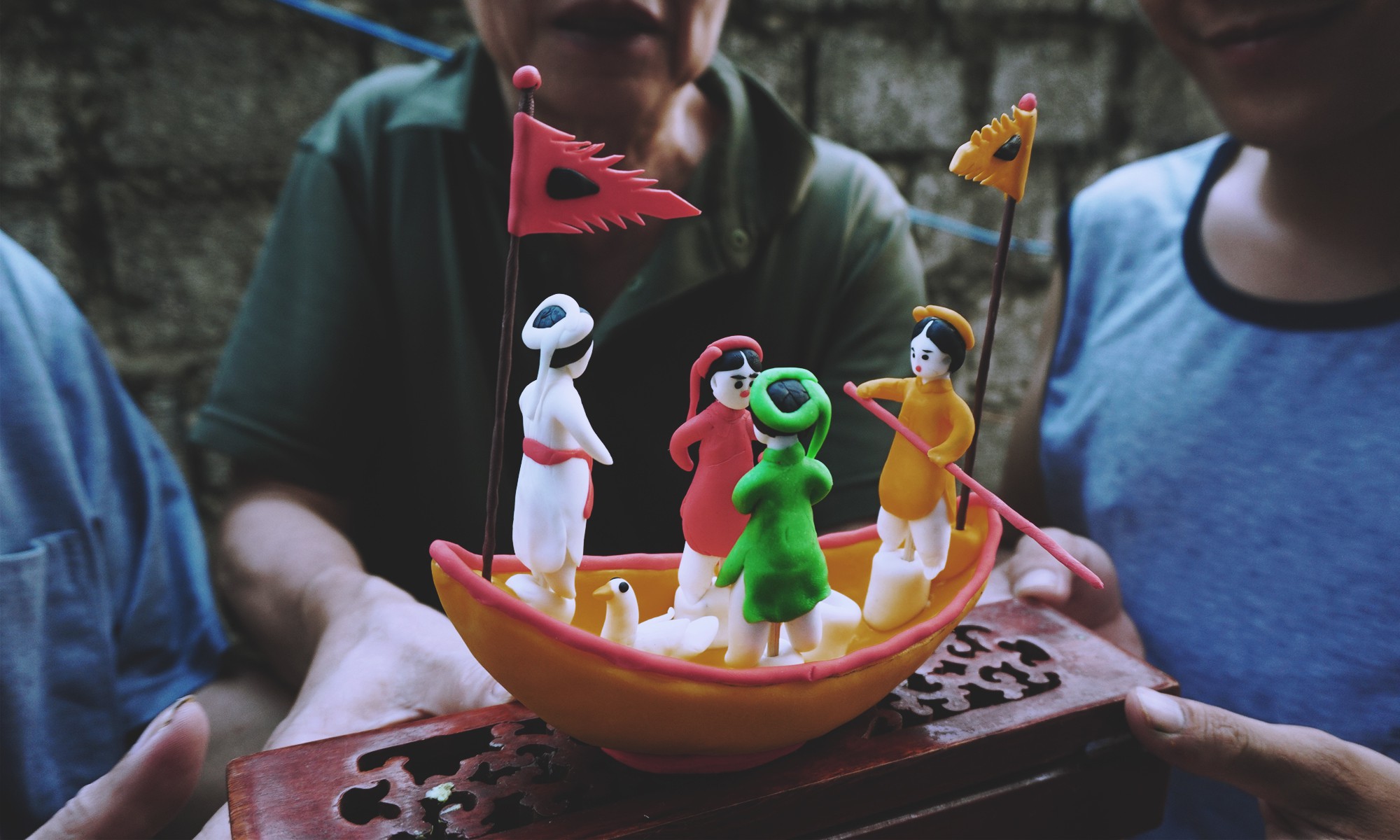Con giong bot, a traditional powder figurine from northern Vietnam, is making a comeback thanks to a dedicated team hoping to use their passion and expertise to revive the nearly extinct art form.
Con giong bot artists mix tapioca starch and glutinous rice flour to create a doughy medium used to craft toy animals painted with colors extracted from flowers, leaves, or spiny bitter gourds.
Traditionally, there are two types of powder figurine historically linked in to Vietnam.
Con giong Dong Xuan figure were mainly made by Vietnamese women in their idle time during the Full Moon Festival.
The common figures in this style were animals, such as buffalos, horses, goats, dogs, chickens, pigs, and gold fish. Fruits were also a common design for Con giong Dong Xuan makers.
Con giong Pho Khach artists tended to design their figurines using a more sophisticated and delicate style of modeling.
Figurines in this style often took the form of the four sacred animals in Asia – dragons, lions, turtles, phoenixs – or feng shui animals like the Jin Chan (Money Toad), the five tigers, or the lion head.
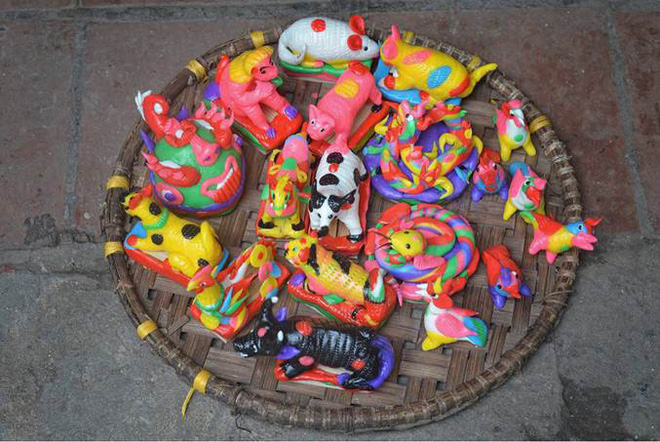 |
| Figurines of the twelve Zodiac animals |
A journey of restoration
Though traditional Con giong bot is all but extinct, artists Trinh Bach, Dang Van Hau and Pham Nguyet Anh are leading the crusade to bring back this small piece of their country’s culture.
Each member of the crew brings their own unique set of skills to the table.
Dang Van Hau is a young artisan with skills and potential.
Pham Nguyet Anh, at over 70 years old, holds the secret to making the powder figurine.
Team leader Trinh Bach’s knowledge of the history and origin of the powder toy is likely unmatched by anyone alive.
Even with their combined set of skills, the group faces an interesting set of challenges.
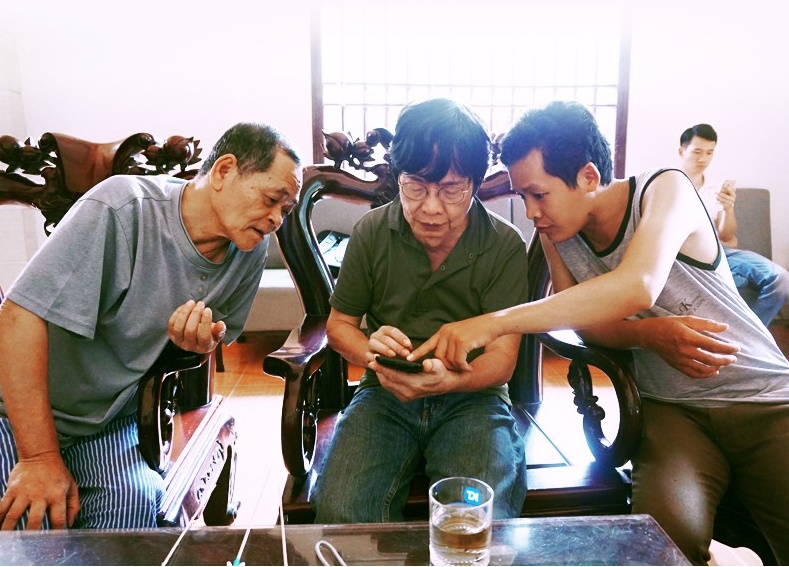 |
| Phien, Bach and Hau (left to right) met up in October 2018 to discuss a figurine model. Photo: Tuoi Tre |
Dang Van Hau has been making to he (pronounced TOH HEH), a similar type of powder figurine that is edible and still quite popular today, for quite some time, but says con giong bot is a whole different game.
Hau learned from Pham Nguyet Anh that technically it takes a set of more than ten tools and a whole lot of skill to design the perfect traditional powder toy.
Relying on Bach’s knowledge and research, Hau’s craftsmanship, and Anh’s expertise, the team can now reproduce con giong bot in both the Dong Xuan and Pho Khach styles.
Their set of the four sacred Asian animals now retails for VND600,000 (US$25.75)
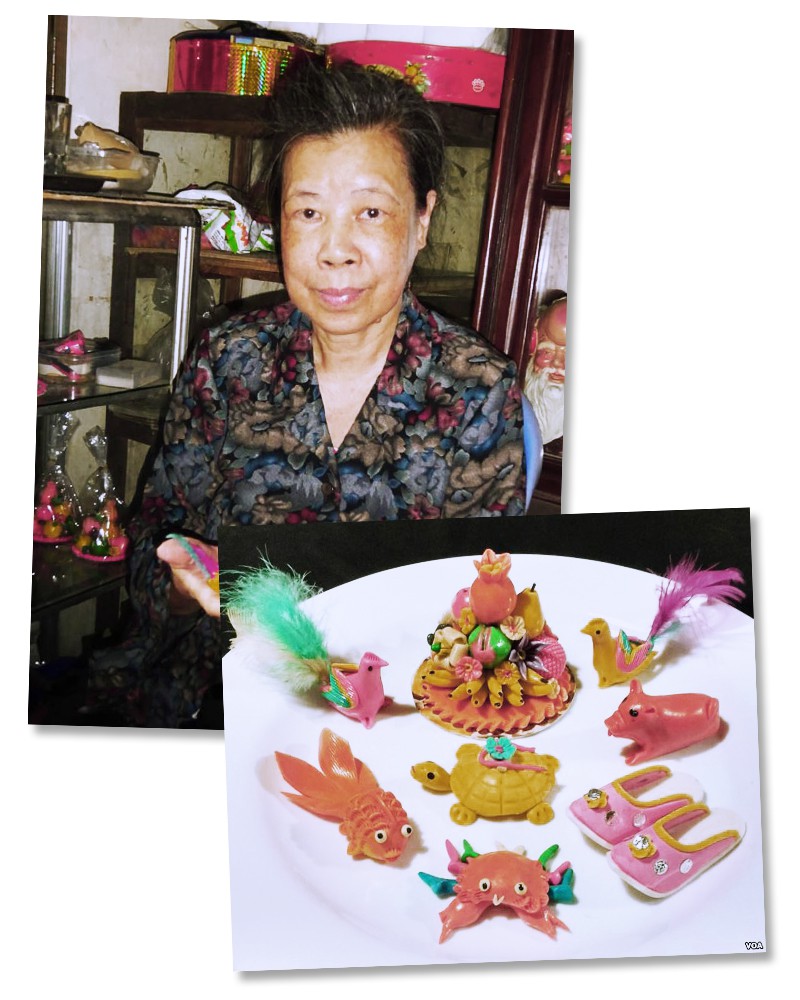 |
| Pham Nguyet Anh with some of her typical Dong Xuan powder figurines. Photo: Trinh Bach |
Meticulous work
Part of the team’s success in bringing these toys back to life is their attention to detail.
“It took me a whole afternoon just to make one pig figurine,” Hau said.
“The pig shouldn’t be too real or too rough. It has to be chubby, innocent, and most importantly, soulful.”
Similarly, a dragon figurine for the average person can only have four claws, according to Bach, explaining that five-clawed dragons were reserved exclusively for the royal family.
Making whiskers can also be a challenge.
The eldest member of the team, Anh, uses feathers meticulously plucked from only certain areas of the chicken and dyes them black before sticking them onto mouse figurines.
Feathers for the tail of a phoenix must be taken from the tail feathers of ga tre, a small-sized native Vietnamese chicken which can only be found in small section of the chicken feather duster market on Trieu Khuc Street in Hanoi.
 |
| Different models of con giong bot |
The team also hopes to revive different models of con giong bot that are no longer made today.
In October, Bach and Hau gathered together with the latter’s uncle, Phien, who is also known as an excellent to he artist.
The three spent time studying an old model featuring a flagged boat carrying four dancing Vietnamese women in traditional four-part dresses.
They called the model Tu phu and believe it was meant to be a festival offering first designed in the beginning of the 20th century in Phu Xuyen District, Hanoi.
Passion and devotion
Trinh Bach has a true passion for Vietnamese traditional culture.
He gave up his artistic career as a guitarist in the US and returned to Vietnam to reproduce traditional Vietnamese royal art, including ceramics, wood craft, and clothing.
Besides con giong bot, he has also helped to revive other lost traditional handicrafts such as the star-shaped Bao Dap lanterns of Nam Dinh province.
Dang Van Hau was born in a to he making village and began learning the art at a young age from his grandfather, Dang Xuan Ha.
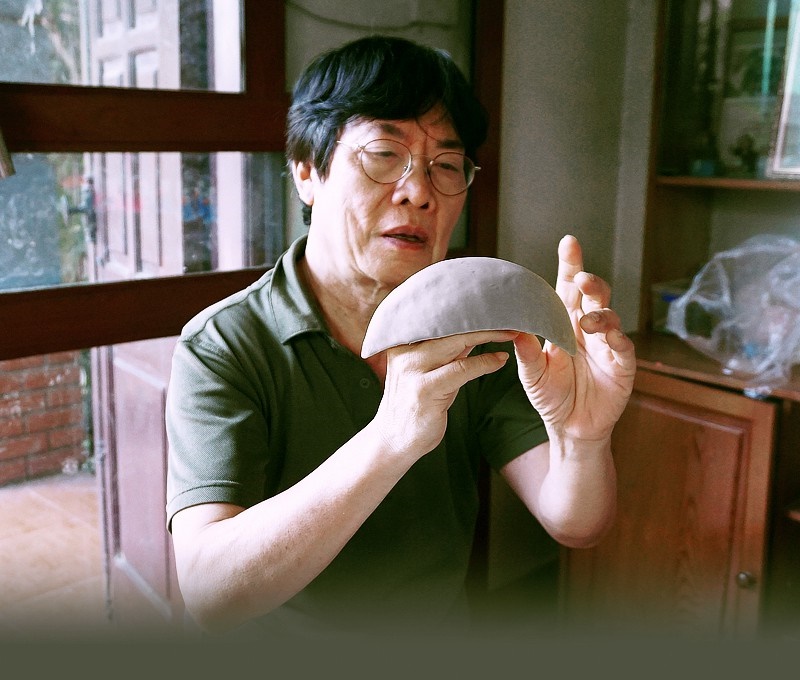 |
| Trinh Bach |



